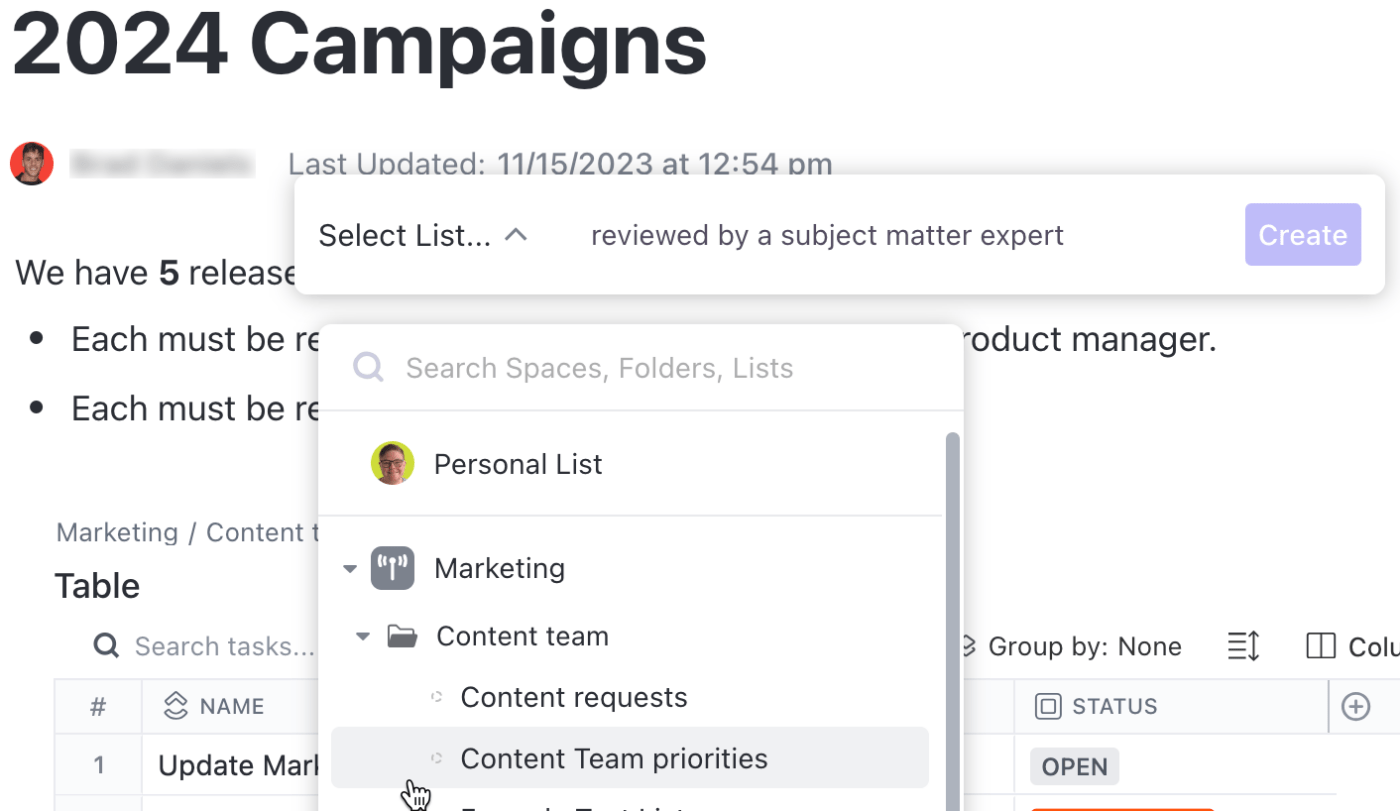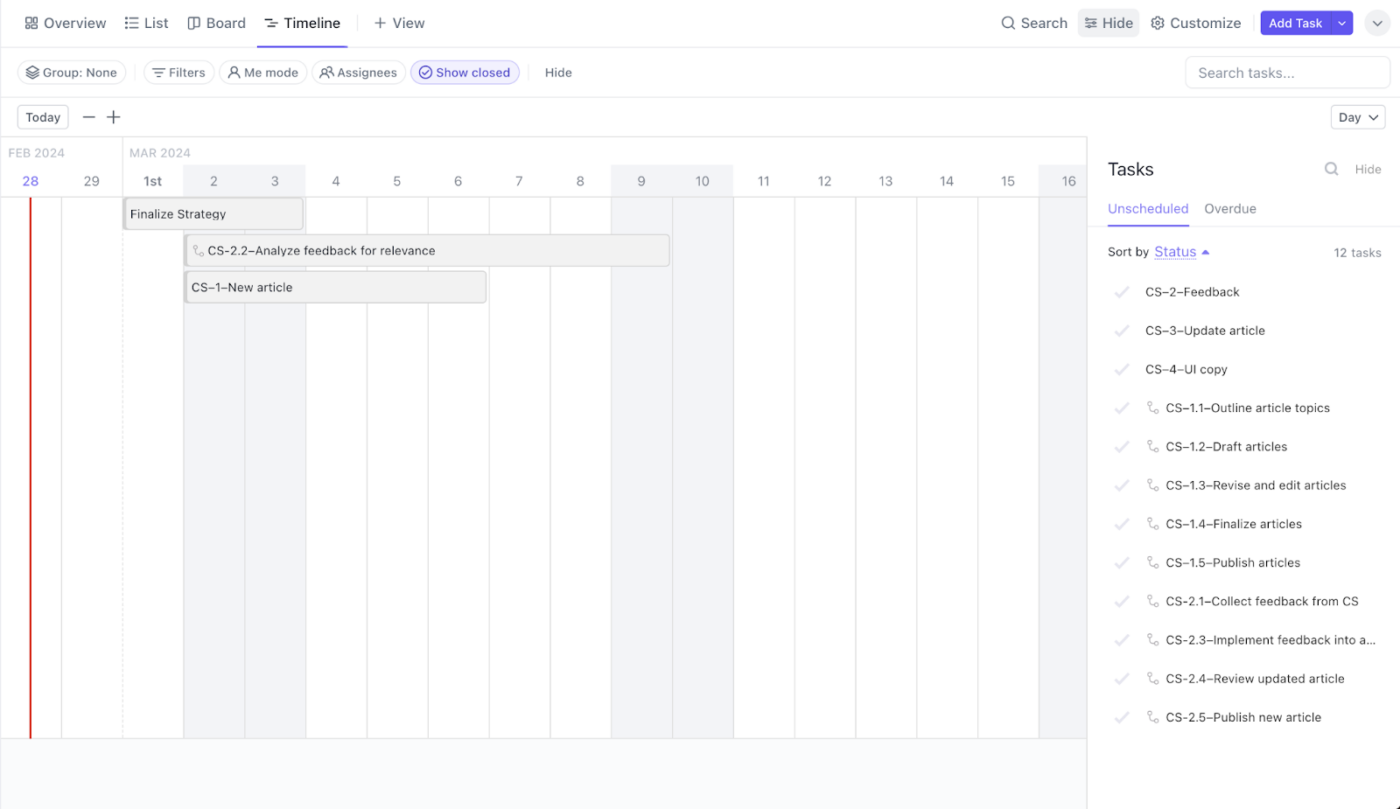Boost Productivity with the Rapid Planning Method

Sorry, there were no results found for “”
Sorry, there were no results found for “”
Sorry, there were no results found for “”
When you’re drowning in to-do lists and good intentions, the allure of productivity hacks and self-improvement plans is undeniable. While implementing these tactics, even the best of us fall into the trap of overambition, setting unrealistic goals that lead to frustration.
However, there are more sustainable approaches to goal-setting and productivity planning. One of them is the Rapid Planning Method (RPM). Unlike quick-fix productivity hacks that promise everything and deliver nothing except burnout and a quest for more productivity hacks, the RPM system shifts the focus toward aligning actions with purpose.
This shift from “what” to “why” empowers individuals to create a concrete action plan for achieving their aspirations.
But how does it work, and who should adopt it? And how do we get the most out of it to improve our personal and professional lives?
This article answers all these questions and explores RPM’s potential to transform personal and professional lives.
The RPM is a goal-setting and action framework designed to bridge the gap between intention and achievement. It tackles a common pain point for many: having a vague idea of what you want but lacking a clear roadmap to get there.
Pioneered by author and coach Tony Robbins, the method provides a structured approach that defines your goals with laser focus, identifies the driving force behind them, and then translates those aspirations into actionable steps.
Here’s the core benefit of this method—it transforms your goals from fleeting wishes into a tangible plan you can execute confidently.
The first step toward taking back your focus and achieving the realization of your vision is to ask yourself three questions in a specific sequence on a consistent basis, the RPM system. Although RPM stands for the Rapid Planning Method, you can also think of it as a Results-oriented/Purpose-driven/Massive Action Plan.
The RPM system emerged from the teachings of Robbins, a renowned motivational speaker and life coach who craved a system that could bridge the gap between desire and achievement.
This existential yearning led him to pioneer the method. It wasn’t a top-down invention but an organic process—Robbins tinkering with his own approach to goal setting and time management.
The core concept was revolutionary: move beyond tasks and focus on outcomes. What did he truly want to achieve, and what drove that desire? This introspection provided the fuel for massive action.
RPM’s early days were a crucible of refinement.
Pioneered by author and coach Tony Robbins, the method provides a structured approach that defines your goals with laser focus, identifies the driving force behind them, and then translates those aspirations into actionable steps.
These seemingly simple questions held immense power. By forcing individuals to confront their deepest motivations, RPM bypassed the realm of ‘shoulds’ and ‘oughts’ and tapped into the wellspring of ‘why’.
Activity without purpose is the drain of your own life itself.
This emotional connection to goals fueled a passion for taking action, a passion that a mere to-do list often fails to ignite.
The success Robbins experienced with RPM wasn’t confined to his personal life. As he shared the method with clients and audiences, a remarkable thing happened: It transcended individual ambition and became a powerful tool for businesses.
Project teams, sales forces, and entire organizations adopted RPM to achieve goals with unwavering commitment.
Today, RPM stands as a testament to the transformative power of questioning. It’s a reminder that employee productivity isn’t just about ticking boxes; it’s about harnessing a unique mix of desire, purpose, and action.
In a world obsessed with hacks and quick fixes, RPM offers a timeless philosophy that the path to achievement begins not with external systems but with introspection of our own motivations.
Here are some examples:
Many fitness hacks focus on quick weight loss or fad diets. RPM asks instead: “What does peak physical fitness mean to me?”
Maybe it’s feeling strong enough to hike a mountain or having the energy to play with your kids. This deeper purpose fuels a massive action plan like joining a gym, hiring a trainer, and prepping healthy meals—all fueled by a clear vision, not just a number on the scale.
You may be attracted to the latest ‘hot job’ because of its popularity. But RPM will encourage you to ask, “What kind of impact do I want to make with my career?”
Maybe it’s using your skills to help others or feeling intellectually stimulated. This purpose guides your actions, such as taking online courses, networking with professionals in your desired field, or even volunteering to gain relevant experience.
You may be struggling with language-learning apps that promise fluency in a week. RPM asks, “Why do I want to learn this skill?”
Maybe it’s to connect with your heritage or open up new travel opportunities.
This fuels a massive action plan such as finding a language partner, enrolling in a structured course, or immersing yourself in the culture
For a deeper understanding of the RPM methodology, Tony Robbins’ book Time of Your Life is a must-read. You can finish reading this comprehensive guide in as few as three sittings!
The book is a rich exploration of the core RPM principles, offering practical exercises and strategies for implementation.
Through personal anecdotes and real-life examples, Robbins demonstrates how the same RPM can be applied to various goals, from career aspirations to personal development pursuits.
The book illustrates five essential steps to implement the method:
First is a brainstorming session where you get all your thoughts and desires about a specific topic onto a paper. Don’t hold back. Write down everything you want to achieve.
After capturing everything, review your list and categorize similar items together. This will help you identify key areas you want to focus on.
For each key area, define your desired results and the ‘why’ behind them. What is your purpose for achieving this? Having a strong emotional connection to your goals will fuel your motivation.
Develop a clear action plan with specific steps to take you toward your goals. Assign yourself an empowering identity that reflects the person you’ll become by achieving this goal.
Instead of feeling like just an IT worker, you can be a Tech Detective, transforming your role from mundane to exciting. Likewise, a customer success rep can think of themselves as a client concierge who actively supports and represents the client’s needs. This identity shift can motivate you and make even tough tasks enjoyable.
Regularly revisit your RPM plans and assess your progress. Are you on track? Do any of your goals or action steps need adjusting? This ongoing evaluation will ensure your successful RPM plan stays relevant and effective.
The effectiveness of RPM lies in its focus on three key elements:
Let’s say your goal is to write a novel. Success in this case would mean to have a finished manuscript, ideally between 50,000 and 100,000 words long, that’s polished and ready for querying agents or self-publishing.
But why do you want to write a novel? Maybe you have a story burning to be told, or you dream of seeing your name on a published book. Perhaps you want to explore a creative outlet or share your unique voice with the world.
Understanding this motivation will keep you engaged through the challenging writing phases. Your MAP then could look something like this:
Stage 1: Planning and research
Stage 2: Writing
Join a writing group or find a writing buddy for feedback and accountability (ongoing throughout the process)
Stage 3: Revision and editing
Stage 4: Publishing preparation
The Rapid Planning Method helps you:
Instead of feeling overwhelmed by tasks, you gain a sense of control and direction, leading to increased productivity and achieving your goals faster
According to the Tony Robbins Workbook, The Time of Your Life:
It’s maximizing your results and your fulfillment simultaneously because you’re not just achieving something, you’re fulfilled emotionally. You’re achieving the vision you created, and you have the emotions you want most attached to it. An extraordinary life is not something selected for the lucky few. It’s our birthright as human beings. It’s yours for the asking. It’s yours for the taking.”
Read on to find out how you can effectively implement Robbins’ method.
Here are some practical tips for successfully implementing RPM:
Schedule RPM time: Dedicate specific slots in your week, such as a weekly planning meeting with yourself, to brainstorm and refine your RPM plans. This consistent focus keeps you on track.
Embrace flexibility: RPM is adaptable. Personal or professional life throws curveballs, so be prepared to adjust your plans as needed.
Find an accountability partner: Share your RPM goals with a friend, colleague, or mentor who can offer encouragement and hold you accountable for your progress.
Prioritize with passion: When prioritizing tasks within your MAPs, consider the urgency of each task and how much each action aligns with your purpose. This will fuel your motivation.
Chunk it down: Break down large goals into bite-sized, actionable steps. This makes them less overwhelming and keeps you moving forward.
Harness the power of technology: Use RPM planners, such as resource planning templates, to create your next plan.
Or, you can use a digital project time management platform like ClickUp that aligns with the RPM structure. This can help you visualize your plans and stay organized.
Successful people rarely just dream about success; they take concrete steps to achieve it. RPM aligns with this action-oriented mindset. Entrepreneurs can use it to build prototypes, athletes to train rigorously, and artists to constantly create new work.
The beauty of the RPM lies in its versatility. Here are some of the most common ways people may integrate it into their everyday lives:
While RPM offers immense benefits, there are potential challenges to consider:
If RPM feels overwhelming, consider exploring other methods, such as the Eisenhower time management matrix (prioritization), the Getting Things Done (GTD) method (task management), or the Pomodoro Technique (time management).
Don’t be discouraged if you encounter these hurdles. The key is to find strategies that work for you. ClickUp may be immensely helpful here.
Here’s how you can use ClickUp at every step of the Rapid Planning Method to make its implementation smoother:
Use ClickUp Docs to capture all your ideas and free-flowing thoughts. Create a Doc for each goal or project and organize your thoughts using built-in formatting elements such as headings, bullet points, and mind maps.

Turn your big-picture ideas from mere sentences and paragraphs in Docs into actionable steps using ClickUp Tasks.
You can create a task from any text within a Doc.
To do so:

To create the task immediately, you can click Create. You can also add additional details like assignee or priority
Use the List view in ClickUp to organize these tasks easily.

ClickUp Goals is perfect for defining your desired outcomes. Set a clear, measurable goal and define a deadline. Link your ClickUp Lists (from Step 2) to the Goal to create a clear roadmap.
Use ClickUp’s drag-and-drop functionality within your Lists to prioritize tasks as urgent, high priority, normal priority, and low priority and establish task dependencies. This will show you the critical path to achieving your goal.
Each ClickUp Goal can represent a major outcome you desire. Within each Goal, create separate Lists to categorize similar ideas. This ‘chunking’ helps you easily manage assignments and large amounts of information.

Your RPM planning block could look like this:
| Result (What) | Purpose (Why) | MAP (How) |
| Improve public speaking skills: Deliver a confident and engaging presentation at the upcoming company meeting on July 1st. | Increase my visibility within the company for potential future opportunities. Feel more empowered and self-assured in public speaking situations. | Content research (2 days) Gather information on the presentation topic and tailor it to the audience’s interests Research effective presentation structures and techniques Practice and delivery (4 days) Craft a clear and concise presentation outline Practice delivering the presentation out loud, focusing on vocal variety, body language, and timing Record myself practicing and reviewing for improvement areas Feedback and refinement (2 days) Ask a trusted colleague or friend to provide feedback on a practice session Refine the presentation based on the feedback, including content, delivery style, and visual aids Preparation and confidence boost (1 day) Prepare any visual aids needed for the presentation (e.g., slides, handouts) Visualize myself delivering a successful presentation with confidence and enthusiasm |
Visualize your RPM plan using ClickUp Timelines. Drag and drop tasks onto the timeline to see the overall project flow and identify potential bottlenecks.

Use ClickUp Custom Fields for tasks or projects where you can define the identity term for that specific task/project. This way, you can visualize your role and feel more motivated while working on it.
You can also create tags with identity terms such as ‘Tech Detective’ or ‘Marketing Queen’ and assign them to relevant tasks. This allows you to filter and group tasks based on your desired identity, keeping that motivating factor at the forefront.

Use the ClickUp Action Plan Template as a starting point for your RPM plan review process. This template includes sections for Goals, Next Steps, and Roadblocks, allowing you to track progress and identify areas for improvement easily.
Use custom statuses, fields, and views, and improve action plan tracking with comment reactions, nested subtasks, multiple assignees, and priority labels.
The template will simplify:
You can also integrate ClickUp with your calendar app to automatically schedule tasks and reminders based on your RPM plan. This ensures you stay on track and take action toward your goals. Choose from a range of apps on ClickUp Integrations to bring everything together.
RPM can transform your relationship with productivity in your personal and professional life. It’s not solely about frantically checking off tasks; it’s about taking deliberate action toward a vision that truly excites you. It can also significantly improve your prioritization abilities and time management skills.
ClickUp can be your go-to tool for managing the RPM process, keeping you organized and focused on what matters most.
By combining the power of this time management technique with ClickUp’s robust features, you can create a system for achieving anything you set your mind to.
Try ClickUp today and get one step closer to achieving those ambitious goals!
© 2026 ClickUp